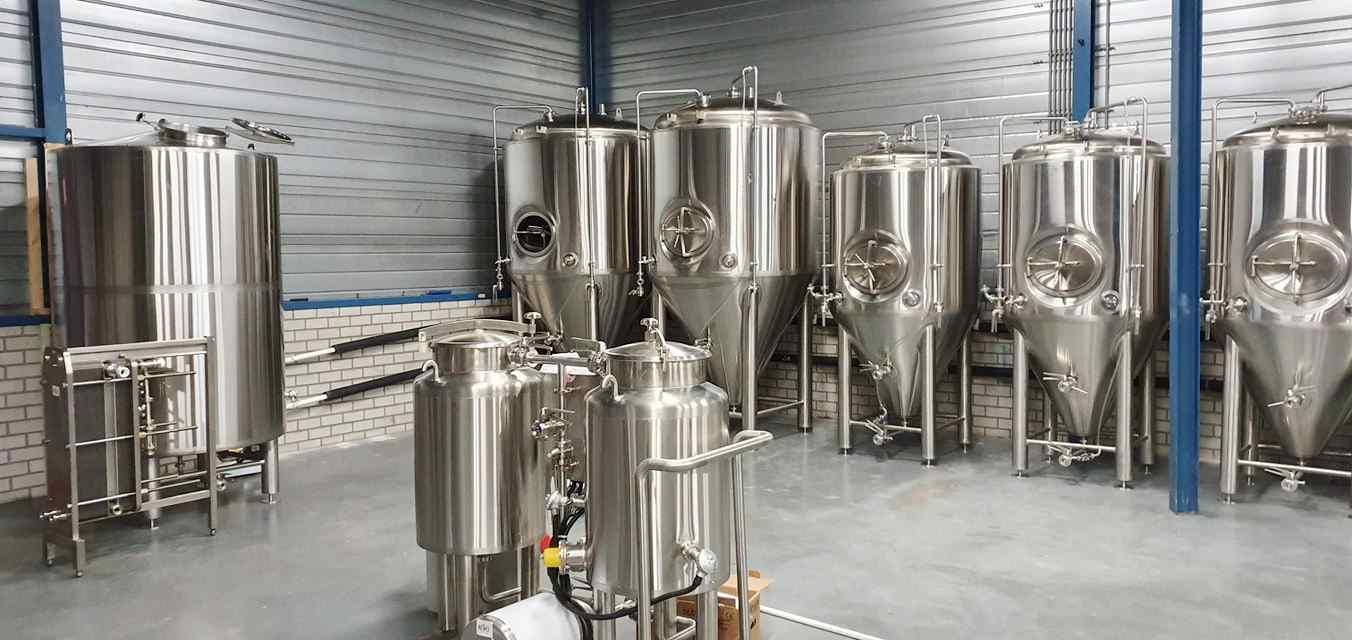
The glycol chilling system in a brewery is used to cool the wort and chill the fermentation. By optimising the design of the glycol chilling system, the energy consumption in the operation of the plant can be reduced.
The fermentation process of beer releases a large amount of heat. In order to maintain a constant temperature in the fermentation tanks, it is necessary to cool them down. Large breweries generally use ammonia into the coils for cooling, using the heat absorption principle of the liquid to gaseous phase change of ammonia. Craft beer equipment is small and requires strict floor space. Glycol or alcohol solutions are used for cooling.
Glycol Water Tank
Known in the trade as glycol water tanks, they are used to store glycol water at approximately -5°C. The concentration of the glycol solution used to chill the water is usually 25% or 33%. The concentration of the glycol solution cannot be generalised with reference to latitude. This is also the most used one.
Advantages
The size of the equipped chiller is large, but it is easy to install and does not require refrigeration expertise. It only requires the chilled water circulation line from the unit to be connected to the chilled water tank. There are two types of chillers, air-cooled and water-cooled. When the temperature is not very high, try to choose the air-cooled refrigeration method as this has a low failure rate and is very adaptable.
Chilled Water Tank In Refrigerator
Another type is to put a small volume chilled water tank in the refrigeration unit as a buffer so that there is no need to add a large chilled water tank. The unit has a small chilled water tank built into the unit. The chilled water lowers the temperature of the cold water tank and the fermentation tank. During this time, the refrigerator does not stop. Due to the small buffer volume, the refrigerator must be activated whenever there is a cooling demand.
Advantages
Saves the chilled water tank and takes up less space in the workshop.
Disadvantages
Due to the lack of buffering of the large chilled water tank, the fridge requires additional cooling capacity, which can be very large. The most problematic issue is that the fermenter cannot be cooled. If turned on for 3 minutes and off for 10 minutes, this method can lead to frequent start-ups of the fridge, resulting in a reduced life expectancy.
Routine Maintenance Of The Freezer Tank
The freezer tank has a level. We make a mark on the level tube to know the volume of refrigerant in the tank. After a long period of use, when the level drops, we need to add the corresponding 95% alcohol to replace the lost alcohol in order to achieve the concentration and cooling effect we need. The pipe between the ice and water tank and the ice pump should be tightened to prevent leakage.
Summing Up
When designing a brewery, it is important to first determine what method will be used to produce the beer, and then to determine the brewing and fermentation cycles according to the quality requirements of the beer being produced. Based on these specific requirements, the design of the equipment required for beer brewing production is carried out.
Still have a problem on choosing the brewery equipment? We can help with your final decision. If you are looking for a turnkey solution for craft beer brewing system, please contact us. We are looking forward to working with you. Send an email now: [email protected]


.jpg)





Get A Quote